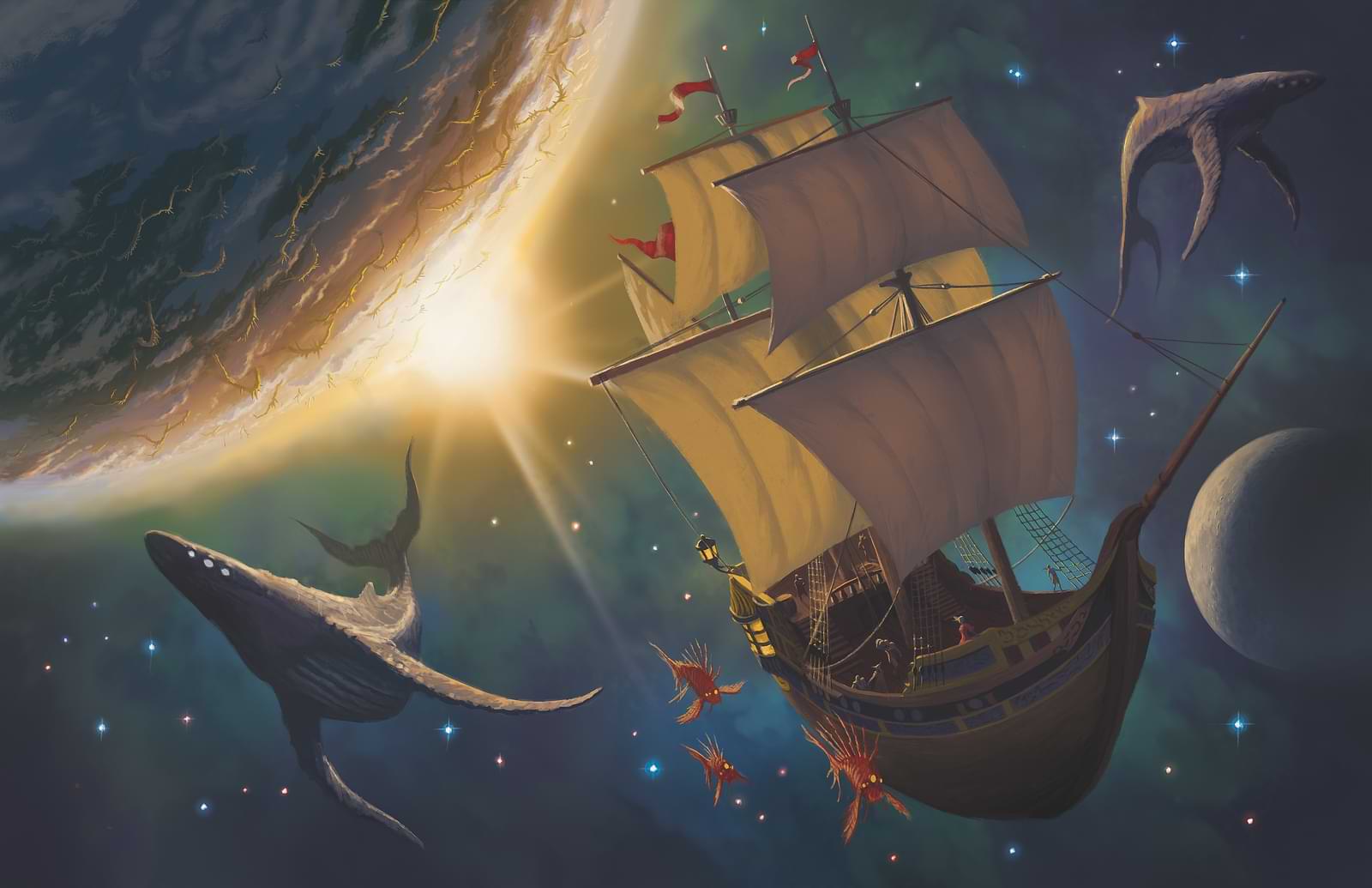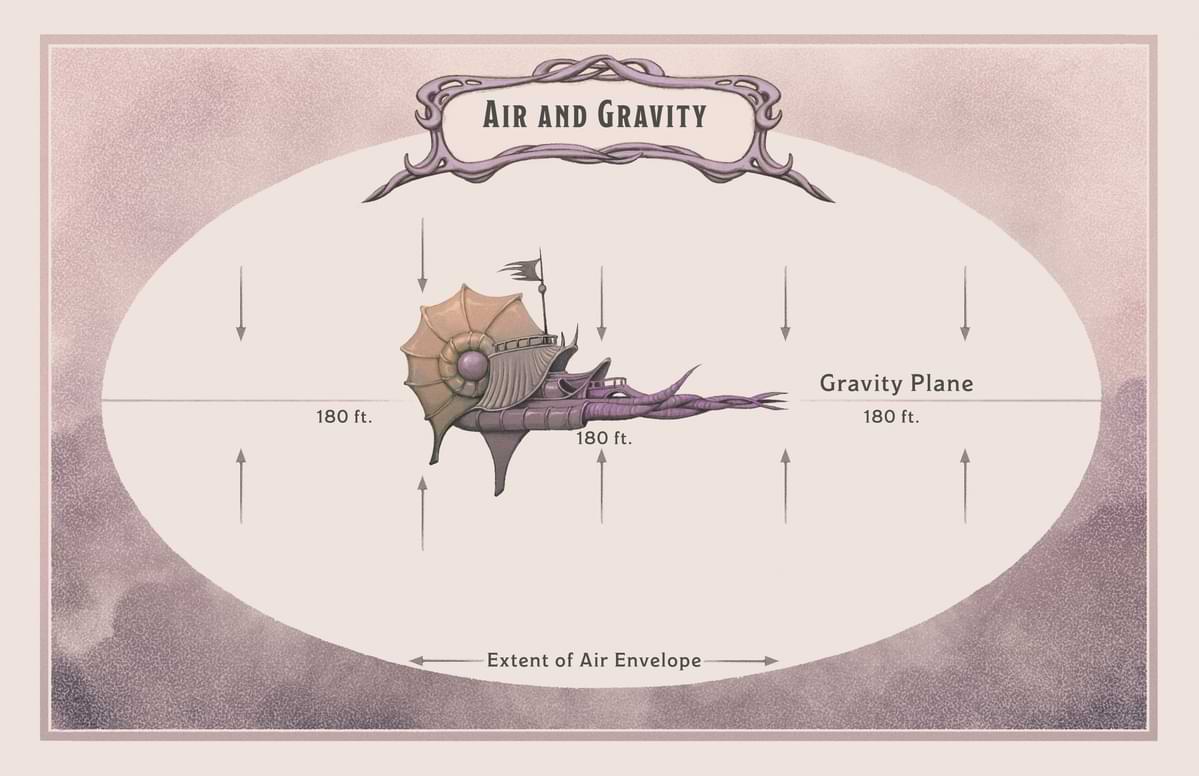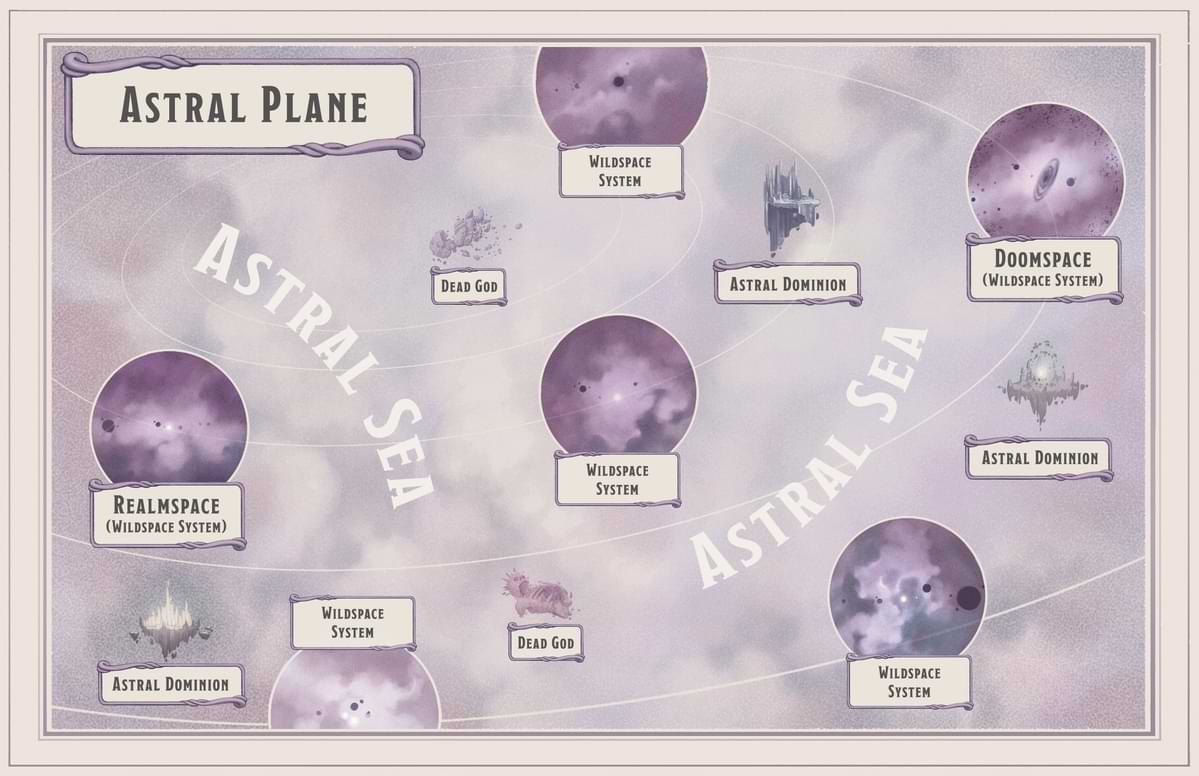Spelljammer is coming to fifth edition Dungeons & Dragons on August 16th, 2022! Spelljammer: Adventures in Space will contain three books and include everything from player options to an adventure designed for characters of levels 5–8.
For those who don't know, Spelljammer is more than a D&D setting that allows players to board magical flying ships, traverse intergalactic causeways, meet all types of weird creatures, and visit destinations beyond their wildest dreams. Well, actually, that's precisely what Spelljammer is. To prep you for your spacefaring adventures, we'll take you through a crash course of what any good spelljamming adventurer needs to know before launching into the expanse of space.
Unlock Spelljammer Academy Today!
If you can't wait until Adventures in Space launches for some Spelljammer action, claim your copy of Spelljammer Academy. This adventure series introduces players to Spelljammer concepts and is available at no cost! All you will need is a D&D Beyond account, so sign up today!
So, You Want to Go to Space

Space in Spelljammer isn't real space. It's a sort of magic space, commonly known as Wildspace. Once you leave the atmosphere of whatever planet you're on, you'll enter a vast, deadly vacuum, much like when you leave a planet in real life. Before we discuss the differences between our space and Wildspace, let's look at most astral adventurers' vehicle of choice: spelljamming ships!
Spelljamming Ships
The most effective way to travel through Wildspace is to use a ship specifically built for such a purpose. Spelljamming ships come in a wide variety of styles. Some resemble naval vessels, while others resemble giant insects or sea creatures.
These ships are typically captained by a single person who uses their magical powers to make the ship fly through atmosphere and Wildspace. The spellcaster in charge of making the ship move sits in a throne-like device known as a spelljamming helm. The helm allows the spellcaster to take complete control of the ship and fly it with their thoughts, akin to moving a limb.
Air Envelopes
Wildspace can be traversed by anyone or anything that leaves a planet's atmosphere, for a short time at least. Objects that enter Wildspace from a breathable atmosphere take small pockets of air with them, known as air envelopes, that they can use for … well … breathing.
Unfortunately, creatures leaving a planet's atmosphere will exhaust the air in their envelope in 1 minute. Once the air from their air pocket runs out, they will only be able to hold their breath for 1 + their Constitution modifier minutes (minimum 30 seconds) before they begin suffocating. This is why most creatures venture into Wildspace aboard spelljamming ships. These ships are much larger than a single creature and can therefore bring 120 days' worth of fresh air with them, as long as they are not overcrowded. Typically, a ship's air envelope extends as far out in any direction as the ship is long (see image below).
After 120 days—or if other extenuating circumstances occur—and the ship's air envelope hasn't been replenished, it becomes "foul air." Mechanically, this means that creatures who breathe the air receive the poisoned condition until they breathe fresh air. In reality, this means the air smells and feels like the equivalent of a locker room on a hot day. If the air envelope still hasn't been replenished after another 120 days after the air fouls, the air envelope becomes "deadly," and all creatures within the air envelope begin to suffocate.
Merging Air Envelopes
So, you've just left your lovely clean-aired planet, and you think you're safe with your fresh air envelope on a relatively short journey to another world. Think again. If a bigger ship comes along with a not-so-fresh air envelope and merges with your ship's air envelope, you will take on the atmosphere of said ship.
This can cause quite a dire situation when you merge with the depleted atmosphere of a clockwork horror-crewed ship that tries to strip your vessel of parts. But, don't worry, after you're finished fighting off the waves of killer robots, you can refresh your air envelope at any nearby planet (assuming you don't suffocate first).

Gravity
The second key difference between real space and Wildspace is that gravity tends to work "conveniently" rather than being an unerring force of nature that cares not for the petty whims of mortals.
For massive objects like moons and planets, gravity works similarly to how we experience it. Hopefully, gravity is pulling you down to the center of the earth so you can walk on the surface without feeling a change—which is how it works for these large bodies in Wildspace. For objects like spelljamming ships, gravity functions as a plane that cuts through the horizontal axis of the vessel and extends the length of the air envelope (see image above). This allows creatures to walk on the deck of a ship and even flip upside-down to walk on the bottom of the ship, though it can cause some issues when two ships collide.
While air envelopes are affected by getting close to another ship, gravity planes only interact when contact between two or more ships is made. When this happens, you better hope you're buckled up because the ship with fewer hit points immediately comes under the effect of the gravity plane from the vessel with more hit points.
If you were to fall off of a ship—say, as a result of changing gravity planes—and you can't land on a surface affected by a gravity plane, you will begin to drift into Wildspace. In this case, the ship's gravity will keep you around, but not for long. Any untethered creature or object drifts 10 feet per minute toward the back of the ship's air envelope, opposite the direction the ship is moving. This can be dire for creatures that need to breathe, as they will eventually exit the ship's air envelope and have minimal time to find breathable air. (For tips on surviving this debacle, check out our primer on creating characters for Spelljammer adventures.)
Leaving Your Comfort Zone (and Galaxy)

With access to Wildspace, creatures are not confined to one planet—or even one universe! The infinite possibilities of the multiverse await adventurers brave enough to venture into the unknown dangers beyond their world.
Exploring a Wildspace System
Every D&D world is surrounded by an airless void known as Wildspace. This vast place of asteroids, planets, stars, and—strangely enough—alien sea creatures is what you get if you combine the expanse of space with the teeming ecosystem of the ocean. There are infinite Wildspace systems that contain countless D&D worlds, most of which are eponymously named after their defining characteristic. Take, for instance, Realmspace, the Wildspace system in which Toril, the world of the Forgotten Realms setting, is located.
These systems contain any number of exciting places. In Realmspace, the most interesting of which is a hive of lawless debauchery (and intergalactic diplomacy) known as the Rock of Bral. An entrepreneurial pirate originally founded this outpost, and it now serves as a crucial trading post for intergalactic travelers.
If you're looking to travel to locations beyond your Wildspace system, one of the simplest (but certainly not the safest) ways to get there is through the Astral Plane.
The Astral Plane
Surrounding every Wildspace system is an unending plane of silvery light called the Astral Plane. This realm of thought and dream acts as a transitory plane that can connect Wildspace systems and can even be used to access the Outer Planes of the gods. All one needs to do to access the Astral Plane is depart from their world and travel away from the center of their Wildspace system (only a couple hundred million miles or so) until the inky black of Wildspace begins to turn into the shining silver of the Astral Plane.
Once in the Astral Plane, creatures can move using thought, and don't need to eat, drink, or breathe. All creatures that enter the Astral Plane can also determine the direction they need to travel to reach their destination simply by thinking of it. This may make it seem like traversing these silvery, intergalactic causeways will be a breeze, but that's what everyone thinks until they get swallowed by an astral dreadnought.
Even though spelljamming ships are unnecessary to survive in the Astral Plane, most spacefarers using the Astral Sea to pass between Wildspace systems stay with their ship. This is because once they exit the Astral Plane, all necessities (such as air, food, and transportation) will again become a requirement.
So Long, and Thanks for All the Gith
Well, you should be good to blast off for Wildspace now. As I said, Wildspace isn't real space. You don't need decades of schooling and hundreds of hours of simulations to get up there. Wildspace is where any adventurer possessing a magical ship can launch themselves into the cosmos and find wonders beyond imagination or an excruciating death. Or both!
Mike Bernier (@arcane_eye) is the founder of Arcane Eye, a site focused on providing useful tips and tricks to all those involved in the world of D&D. Outside of writing for Arcane Eye, Mike spends most of his time playing games, hiking with his girlfriend, and tending the veritable jungle of houseplants that have invaded his house.








-
View User Profile
-
Send Message
Posted Apr 26, 2022Oh man. This sounds like so much fun. Too bad my dnd schedule is filled for the next couple years…
-
View User Profile
-
Send Message
Posted Apr 26, 2022I'm curious how the Astral Plane fits in here, since one of the new books in SAiS is called the Astral Adventurer's Guide.
-
View User Profile
-
Send Message
Posted Apr 26, 2022in my estimation the astral plane is set astride the prime material...and therefore wild space...Much like the etheral, shadow, and feywild realms. A creature could travel to the astral realm from the cabin of a spelljammer just as easily as it is done in a musty old mage tower on Toril.
The Astral Plane is the realm of thought and dream, where visitors travel as disembodied souls to reach the Outer Planes. It is a great silvery sea, the same above and below, with swirling wisps of white and gray streaking among motes of light like distant stars. (from the DMG)
-
View User Profile
-
Send Message
Posted Apr 26, 2022"Excited to run spelljammer campaigns" can not describe my readiness to vomit imaginative space campaigns one after the other. Pucker up players, Blast off in 3...2...
-
View User Profile
-
Send Message
Posted Apr 27, 2022"No one is sure why or how the giff have taken such a liking to what some would consider an "uncivilized" weapon, but one thing is for sure: if you ask them about it, they will probably shoot you."
Trigger.
Happy.
Hippos.
Holy hell where has Spelljammer been all my life
-
View User Profile
-
Send Message
Posted Apr 27, 2022So glad they're doing this! We loved Spelljammer back in the day. Time to dig out and dust off all my old SJ books and Homebrew stuff.
Can we do Al-Qadim soon...please?!
-
View User Profile
-
Send Message
Posted Apr 27, 2022Well, if you read the announcement on the official D&D site, it's pretty obvious:
In this new interpretation of Spelljammer, I suspect Wildspace will present a means to bridge the material world and the Astral Plane. The githyanki section in Mordenkainen's already previewed this, including helms, astral skiff and brigs, and planar raiders.
-
View User Profile
-
Send Message
Posted Apr 27, 2022so are the phlogiston and crystal spheres still a thing in the 5e continuity or are they not gunna reveal that until the books come out?
-
View User Profile
-
Send Message
Posted Apr 27, 2022From what this article says, it seems that the phlostigon and crystal spheres do carry over into the new expansion. It is Spelljammer, after all- those are vital parts to the setting, and I'd be surprised if WotC changed something as fundamental as those.
-
View User Profile
-
Send Message
Posted Apr 27, 2022Now to add all of these mechanics to my world setting.
-
View User Profile
-
Send Message
Posted Apr 27, 2022Don't be so sure. The article on the D&D website, while admittedly tiny, doesn't mention phlogiston or crystal spheres. This D&D Beyond article does, but right at the beginning the article says (emphasis mine):
I'll go on record right now as predicting crystal spheres and phlogiston are out in favor of linking spelljamming into the Astral Plane. If nothing else, it would get rid of the whole "your cleric is useless on other worlds" bit from 2nd edition if all worlds connect to the same Astral Plane, and everyone can access their divine powers the same way.
Okay, well, not useless. Limited to 3rd level spells. Whatever.
-
View User Profile
-
Send Message
Posted Apr 27, 2022Thank you Spelljammer for the gift of giff! These wonderful and noble species will have presence in my campaigns like the magnificent firbolgs do.
-
View User Profile
-
Send Message
Posted Apr 27, 2022DRAGONS DRAGONS New More DRAGONs 🐉🐉🐉🐉🐉🐉🐉🐉
-
View User Profile
-
Send Message
Posted Apr 27, 2022"so long, and thanks for all the Gith" is a play on "so long, and thanks for all the fish", which is a book from the hitchhikers guide to the galaxy series!
-
View User Profile
-
Send Message
Posted Apr 27, 2022I AM LITERALLY FOLLOWING EVERY COMMENT AND ARTICLE TO KNOW AS MUCH AS POSSIBLE ABOUT SPELLJAMMER.
-
View User Profile
-
Send Message
Posted Apr 27, 2022I'm excited to see this finally being brought to 5e!
One concern though: am I reading this correctly? Intended for levels 5 through 8? That's a very very specific level range. I mean, as a dm, I am sure that we can create our own content and make it compatible with any level range, but I'm completely taken aback by the default listed level range.
-
View User Profile
-
Send Message
Posted Apr 28, 2022This set is not a long-form adventure like Tyranny of Dragons or Descent into Avernus, taking characters from levels from 1-14. Two of the three books are about setting alone. The third book is a single, short adventure for levels 5-8. From the monsters listed, the setting will have challenges for all levels, but yeah, DMs will have to make those up themselves, or wait for someone on DM's Guild to do so.
-
View User Profile
-
Send Message
Posted Apr 28, 2022They are also going to release a free prequel adventure on D&D Beyond and the Wizards of the Coast web site, the same way they released the free monster compendium. My guess is that the prequel adventure will be for levels 1-4 or levels 3-4, and that it will be relatively short, but sufficient to level up characters quickly to level 5. And I'm also guessing that there will be plenty of options online for how to transition characters who are level 5 from a campaign like Lost Mines of Phandelver, or from whatever gets released on the DM's Guild, into the adventure.
-
View User Profile
-
Send Message
Posted Apr 28, 2022According to news sites, Chris Perkins already confirmed in a press interview that phlogiston and crystal spheres are not in 5e. Instead space slowly fades into the Astral Sea, the stuff between planes. This is supposed to make travel simpler, less clunky and still adventurous.